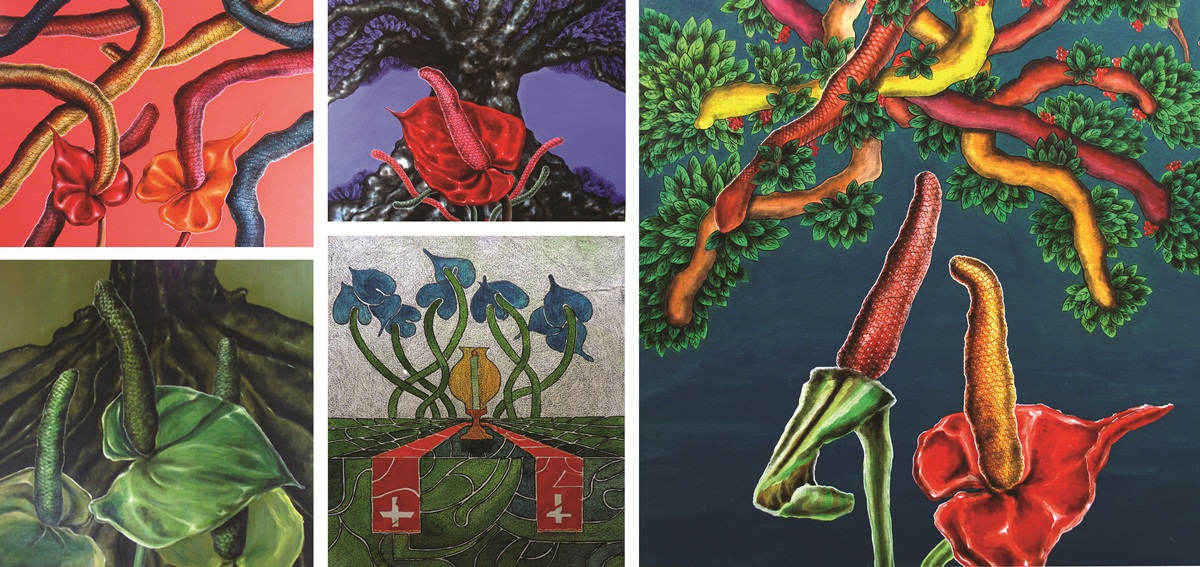
Ebey Edassery’s Anthurium series masterfully marries the real to the surreal, the natural to the imitation and art to science. With their tangles, tufts, starbursts and blazes, the works set off the interconnectedness and the sacred geometry of nature. The steady, intricate patterning on the spadices are a testament to the artist’s heightened ecological sensibilities. They also signify the powerful mutual imprints of the plant on the painter and vice versa. Interestingly enough, the anthurium is called “painter’s palette”. The syncretism of art and botany does not stop there. Anthuriums are perennials both in nature and in the paintings. Edassery’s series comprises at least 18 works with the anthurium as a motif. They are epiphytic: just as they grow on other plants and derive nutrients from their surroundings, they grew on the artist who derived his inspiration from them and the wider natural world. These are mixed-medium works; Edassery has used acrylics, watercolors, charcoal and glass marking, hereby entering form and content into dialog. As each work convenes different mediums, the natural world convenes different forms of life.
This is also reminiscent of the painter’s palette where different colours merge. The interconnectedness is further exemplified in the works, which subject priestly vestments to reticulate venation. Priesthood is one of many aspects of the artist’s life that inform one another. The bottom line: art, life and nature feed into one another like the network of veins and veinlets on a leaf blade. One of the works appears to be loosely inspired by fractals. There is a central midrib and veins whose interstices are packed with leaves which again bear these structures. This self-similarity characterizes the universe to a great extent: the part contains the whole and the whole contains the part. The anthurium highlights the creative principle that is operative in art and in nature. The contact between the paintbrush and the palette to create art on a canvas is similar to the union of the masculine and the feminine principle to create new life. The heart-shaped spathe of the anthurium underlies its apt association with hospitality. We thus infer that the plant is not only close to the heart of the artist, but also a warm welcome into his world.∎
Susanna Correya is a student of literature; and is interested in art and expressions of all kinds.